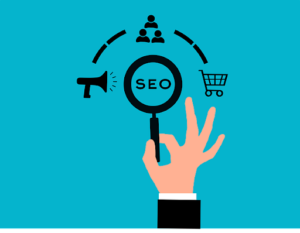Surrinder

What Is An Employee Development Plan?
What Is An Employee Development Plan?
What Is An Employee Development Plan?
Employee development is the process through which a company seeks to improve employee skills and arouse a desire in them to learn and grow. There are several ways a company may help its employees become productive in the workplace while also preparing them to take on more responsibilities in the future.
– 8 mins

Employees today expect more engaging and purposeful professional development opportunities. You may boost your staff by developing a strategy for their growth. For new and experienced employees, an employee training and development plan may help them learn, grow and progress. It’s suitable for your company in the long run; through training and skills development, employees can deal with difficult circumstances and unexpected events in an upbeat manner.
What Is An Employee Development Plan?
An employee development plan is a collaborative set of activities to assist employees in enhancing their abilities for their present position and gaining knowledge and skills for new roles and responsibilities within a business.
Employee development plans, sometimes called employee growth plans, may contain short- and long-term employee development goals for work to strive towards. New skills, certifications, and promotions are all achievable goals. This may include preparing people to serve as leaders in some instances, although this is not always the case. It’s all up to you and your company’s requirements and capabilities and ambitions.
A well-planned employee training and development program will enhance succession planning, talent retention, and organizational success. It effectively combines the employee’s aspirations with those of the business to generate mutually advantageous career progression chances.
Benefits Of Employee Development Plan
An investment in an employee development plan is a typical example of a good scenario for both the employer and the employee. It is in everyone’s best interest to have a strategy in place for their own personal and professional growth. In addition, it enables employees to establish specific professional objectives or accomplishments they desire to attain and monitor their progress towards those goals.
In addition, employee development initiatives may help your both offline and online business grow and prosper. For example, if you know what the company’s future requirements are, you may begin training and developing your present personnel immediately.
In addition, individuals want to work for companies that care about their development. Employees like working for a company where they feel their needs are taken care of. Retaining your workers for a more extended period and creating stronger working relationships can benefit your company in the long term.
There are several ways in which your employee development plan may benefit both your company and your workers in the following ways:
- Makes succession planning more accessible.
- Attracts high-performing employees by enhancing the workplace environment.
- Motivates and inspires your employees
- Enhances the efficiency and profitability of your business by increasing staff productivity.
- Encourages personnel who are ripe for advancement.
- Improves employee happiness and retention
- Helps in performance appraisals and overall growth of the employee
- Assists your company in making long-term plans.
When developing your strategy and pitching it to supervisors and decision-makers, keep these advantages in mind and make sure they know about them.
Steps To Create An Effective Development Plan For Frontline BlueCollar Workers
Employee development plans may take many forms, and the processes outlined here can be customized for every company.
1. Consider Your Company’s objectives
Think about the specific talents each person will need to contribute to achieving your company’s objectives while also considering a reasonable timeframe within which to accomplish these skills. It’s a good idea to make a list of the present strengths of each team member, so you are aware of where to focus your efforts.
2. Take Into Account Employees’ Professional And Personal Aspirations
Collaboration is the most excellent way to grow employees. When establishing an employee development plan, keep in mind each employee’s personal and professional aspirations. This provides workers with the opportunity to concentrate on their professional and personal objectives simultaneously.
Consult with employees to learn about their professional aspirations, expectations for the company’s future, and the skills they believe they’ll need to succeed in their present and future positions. Keep an eye out for methods to link your employee’s ambitions with your company’s current requirements or progress, and listen to their replies.
3. List Essential Resources
After establishing the business and employee objectives, it might be helpful to create a list of resources to help the employee reach their personal and professional goals.
Multiple workers who wish to master a new talent may need training and development in HRM. Coaching and mentoring programmes may cross-train and introduce workers to different departments, helping them acquire new skills or discover new professional interests.
Offer employees specific projects related to their preferred duties and skills or urge them to contribute.
4. Create A Detailed And Well-Defined Action Plan
It’s time to create a concrete action plan that outlines the steps you’ll take to achieve your organization’s and the employee’s development objectives and the resources you’ll need to get there. To ensure that all employees are on the same page, provide a schedule for each goal and review it one-on-one. For review and approval, present the program to HRM, the employee’s supervisor, and other stakeholders.

What Are Employee Development Plan Examples
Let’s look at some workplace instances of professional employee development plans.
- After three years at your payroll department, an FPC (Fundamental Payroll Certification) holder chooses to become a Certified Payroll Professional (CPP). Employee wants to develop in their jobs, contribute more, and earn more. The organisation reimburses course and test expenses.
- Longtime employees want to strengthen their leadership abilities. After consulting with their boss, the employee takes on more mentoring and coaching duties. During this period, the employee’s supervisor offers mentoring advice.
- An employee excelling in written and verbal communication takes on a mission to break through segregated departments. They must discover the teams’ pain areas and try collaboration techniques.
- A new section attends local conferences and seminars. The individual learns new tactics through social listening and other social media trends following the company for their position and suggestions to advance the new department. They may also talk with other experts who provide tips on building teams and achieving outcomes.

Bottom Line
Your latent employee potential wants new skills, expertise, and challenges. Creating an employee development plan links them to opportunities, people and resources. You can support them at any professional level. It’s great to see your people flourish and your business excel.

Surrinder Pandita is a content writer at RankHandy. He has more than 6 years of experience writing for the marketing, HR, and business sectors and aims to provide high-quality content.







Leave a Reply